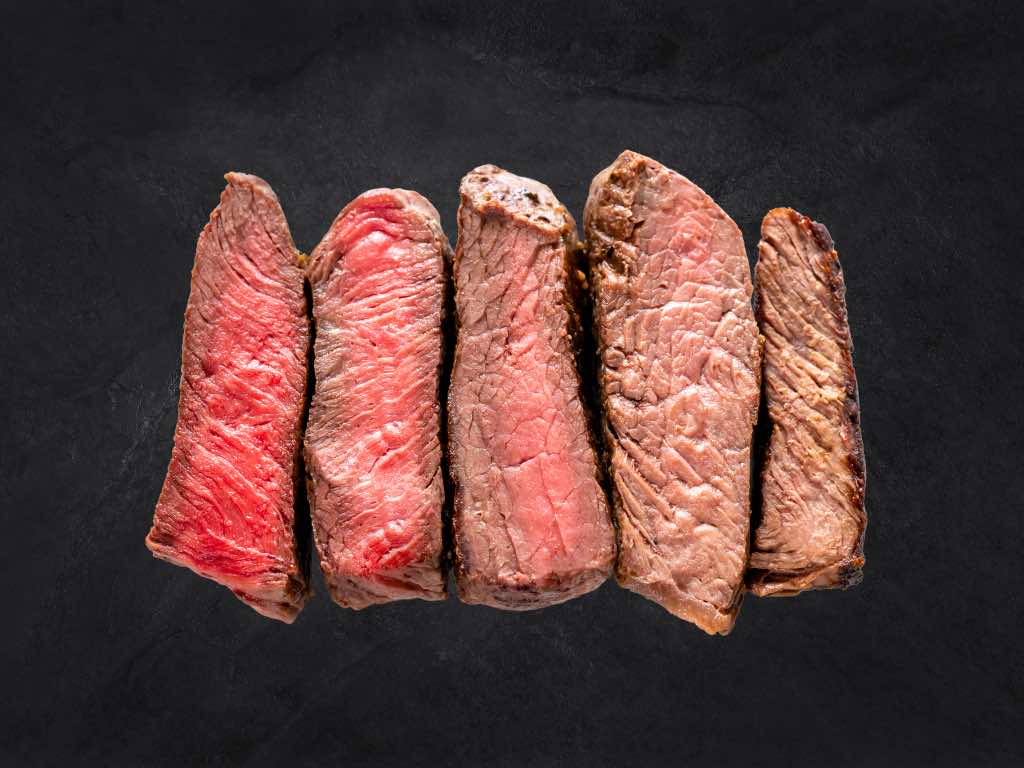
The Ultimate Steak Cooking Chart: A Guide to Culinary Perfection
|
|
Time to read 5 min
Welcome to One Stop Halal!
Written by: Samir P.
|
|
Time to read 5 min
Steak, a culinary delight cherished by meat enthusiasts worldwide, is an art form of cooking. Achieving the perfect steak requires a delicate balance of time, temperature, and technique. Whether you're a seasoned chef or an aspiring home cook, having a reliable steak cooking chart is essential for mastering the nuances of steak preparation. This comprehensive guide will delve into the intricacies of cooking steak, exploring various cuts, cooking methods, and the elusive quest for the perfect doneness.
Before diving into the intricacies of the cooking process, it's crucial to understand the different cuts of steak. Each cut has unique characteristics, flavor profiles, and optimal cooking methods. Here are some popular steak cuts:
Known for its rich marbling and exceptional tenderness, it is a favorite among steak enthusiasts. It's often best cooked using dry heat methods like grilling or pan-searing.
Renowned for its unparalleled tenderness, it comes from the tenderloin area. It's typically leaner than other cuts and benefits from quick cooking methods like pan-searing or grilling.
This cut, also known as a sirloin or strip steak, offers a balance of tenderness and flavor. It can be cooked using various methods, including grilling, broiling, or pan-searing.
These cuts include the strip and tenderloin sections separated by a T-shaped bone. Ideal for those who want a taste of both worlds, T-bone and Porterhouse steaks are best cooked on the grill or using the broiling method.
A versatile and affordable cut, sirloin steak is flavorful and can be cooked using various methods, such as grilling, pan-searing, or broiling.
Choosing the proper cut depends on personal preference, desired flavor, and cooking method. Now, let's explore the cooked steak chart, a roadmap to the perfect steak.
Before embarking on your steak cooking time chart journey, preparing the meat properly is essential. Take the steak out of the refrigerator at least 30 minutes before cooking to allow it to come to room temperature. Pat the steak dry with paper towels to remove excess moisture, promoting a better sear.
Seasoning is a crucial step in enhancing the flavor of your steak. Use a generous amount of salt and pepper on both sides of the steak. You can also experiment with additional herbs and spices based on your preferences.
Preheat a cast-iron skillet or heavy-bottomed pan over medium-high heat.
Determining the doneness of your steak is an essential step to ensure it meets your preferences. While the seasoned chef might rely on intuition and experience, a meat thermometer provides precise guidance for those seeking perfection.
The journey to a perfect steak doesn't end with cooking; the resting period is equally crucial. Here's why allowing your steak to rest is a culinary must:
Allow your steak to rest for 5-10 minutes under a loosely tented foil. This short intermission is crucial before the grand finale – slicing into your masterpiece. Patience during this final act ensures that every bite is a symphony of flavors and textures, completing the journey to the perfect steak.
Welcome to your favorite Butcher Shop. We carry various butcher meat cuts that are hard to find elsewhere. We deliver to your doorstep anywhere in the United States within 1-2 business days.
Mastering the art of cooking steak requires knowledge, skill, and attention to detail. With the help of a comprehensive steak cooking chart, you can confidently navigate the culinary landscape, creating delicious steaks tailored to your preferred level of doneness. Whether you prefer the smoky flavor of a grilled ribeye or the tenderness of a perfectly pan-seared filet mignon, understanding the nuances of each cut and cooking method will elevate your steak game to new heights. So, fire up the grill, heat the pan, and embark on a journey to steak perfection!

© 2025 One Stop Halal, Inc.